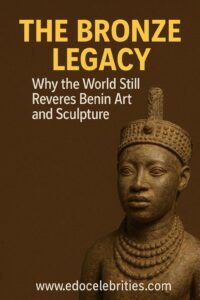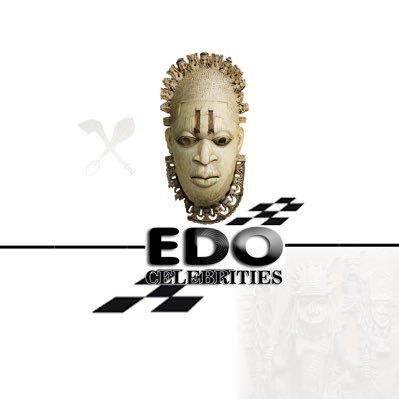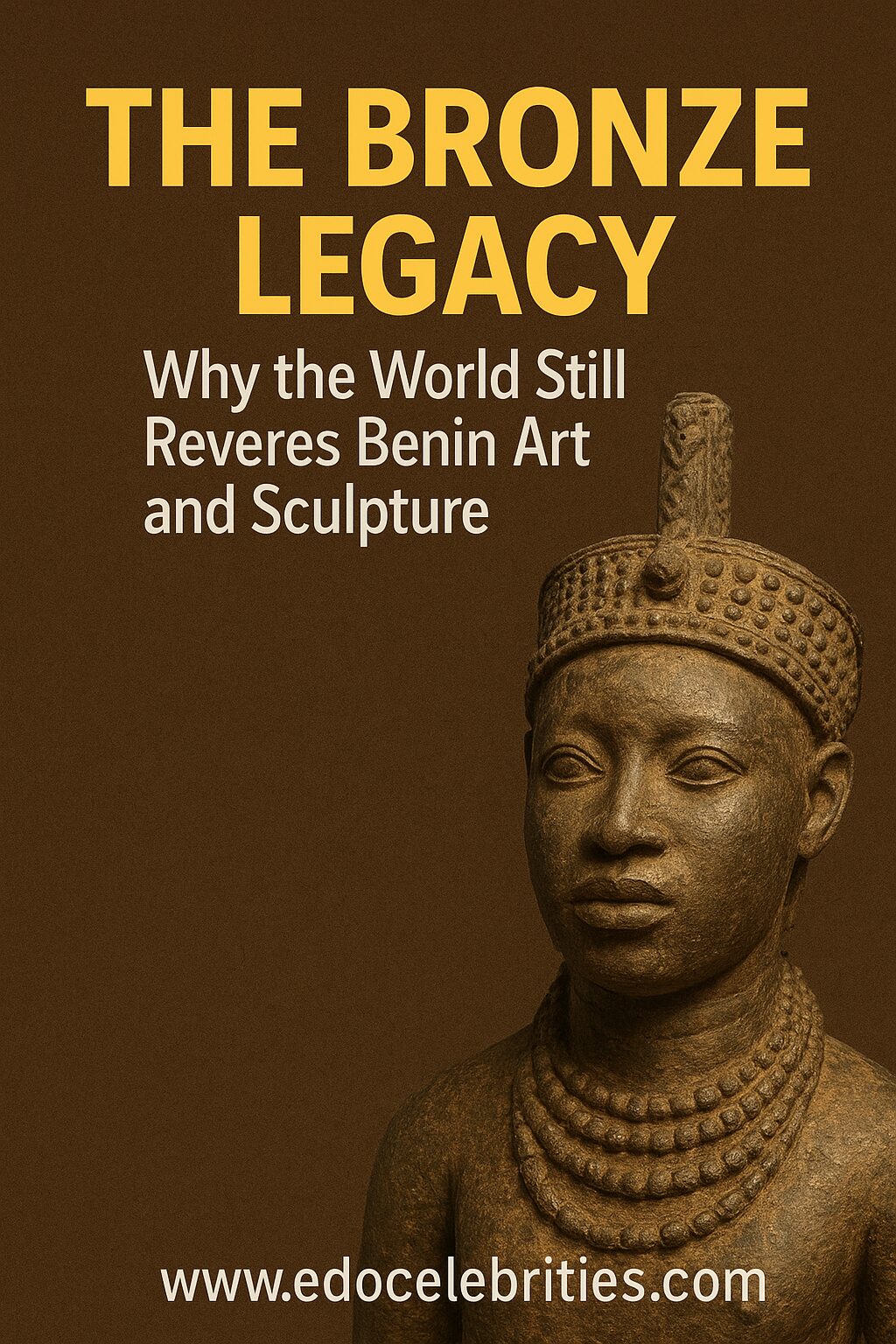A Legacy Cast in Bronze
Long before colonial explorers arrived in the heart of West Africa, the Benin Kingdom stood as one of the most artistically advanced civilizations in the world. From intricate bronze plaques to life-sized royal busts, Edo artisans mastered techniques that would later astonish European scholars and collectors. Today, centuries after their creation, the Benin Bronzes remain powerful symbols of Edo pride, heritage, and creativity — a legacy that still commands global reverence.

The Benin Bronzes are not just art; they are history preserved in metal. Each sculpture tells a story — of kingship, spirituality, and the eternal relationship between man, nature, and the divine. Crafted from brass, bronze, and ivory, these artworks served as both historical record and royal documentation within the Oba’s palace, showcasing battles, rituals, and the sophisticated court life of ancient Benin.
The Mastery Behind the Metal
The ingenuity of Edo craftsmen was unmatched. Using the lost-wax casting technique, local guilds produced metal artworks so refined that European historians in the 19th century doubted Africans could have made them. But for the Edo people, these works were sacred — infused with spiritual meaning and ancestral connection.
The Igun-Eronmwon Guild of Bronze Casters, which still exists today in Benin City, traces its lineage to the craftsmen who served the royal court for centuries. Their art was never for vanity; it was an expression of duty, faith, and memory. Every piece carried divine symbolism — from the leopard (signifying power and protection) to the coral-beaded Oba (symbol of divine kingship).
Colonial Looting and the Global Journey of the Bronzes
In 1897, the British Punitive Expedition raided the Benin Kingdom, looting thousands of bronzes, ivory carvings, and artifacts. These treasures were shipped to London and dispersed across museums in Europe and America — from the British Museum to Berlin’s Humboldt Forum and New York’s Metropolitan Museum of Art.
While the theft remains one of the darkest chapters in African art history, it also made Benin art a subject of global fascination. The sophistication of the bronzes shattered racist colonial myths that Africans lacked civilization or artistry. Ironically, what was stolen to display conquest became proof of Edo genius and African excellence.
The Push for Repatriation and Cultural Restoration
Over a century later, the call for the return of Benin artifacts has grown louder. Several institutions, including Germany and the University of Aberdeen, have begun returning looted bronzes to Nigeria — a historic gesture that Edo people view as both justice and restoration.
The Edo State Government, in collaboration with the Royal Court of Benin, has been working on establishing the Edo Museum of West African Art (EMOWAA) — a world-class facility that will house returned artifacts and inspire new generations of Edo artists.
For many Edo sons and daughters, the return of these bronzes is more than symbolic. It represents a reconnection with identity, a homecoming of ancestral voices, and an opportunity to rewrite history on Edo terms.
From Ancient Craft to Modern Inspiration
Modern Edo creatives — sculptors, painters, designers, and musicians — continue to draw inspiration from the Benin Bronzes. The motifs of ancient masks and royal regalia now appear in fashion, stage design, and film, keeping Edo’s cultural narrative alive in the modern age.
For example, artists like Victor Ehikhamenor and Peju Alatise have incorporated Benin symbols into their contemporary works, merging heritage with innovation. Even international artists, from Hollywood set designers to museum curators, now recognize the depth and spiritual power of Benin artistry.
Why the World Still Reveres Benin Art
What makes Benin art timeless is not just its beauty but its message. Each bronze piece reflects discipline, spirituality, and a deep moral order — values that still guide Edo life today. Respect for ancestors, the centrality of the Oba, and the communal spirit of craftsmanship all find echoes in modern Benin culture.
In every sense, the Benin Bronzes are more than museum relics; they are living embodiments of Edo greatness. Their global fame reminds the world that creativity, resilience, and spiritual depth are core to the Edo identity.
Conclusion: The Spirit in the Bronze
Centuries after their creation, the Benin Bronzes continue to inspire awe, debate, and pride. They have traveled the world, survived plunder, and outlived empires — yet their spirit remains rooted in Benin soil.
As the world finally begins to return what was taken, the bronzes are coming home — not just as artifacts, but as symbols of rebirth. And for Edo people everywhere, that legacy is not just history — it is heritage reborn in bronze.


Leave a Reply